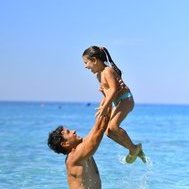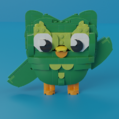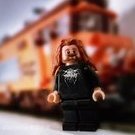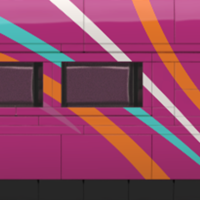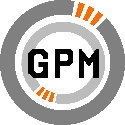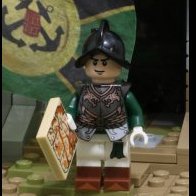Search the Community
Showing results for tags 'moc'.
Found 5695 results
-
THE MASK OF ZORRO left its mark to my childhood in 1998. At my young age, I was pretty impressed what I watched. The way that this mysterious, dark hero with his black mask and cape was fighting for peasents against Spanish dons. The scenes, costumes, acting, story... they were all attracted me. Before I decided to make a Zorro moc, I planned to build an old Spanish manor, but later on I thought, why not. About the movie, I find many similarities with Pirates of The Caribbean so if you haven't watched Zorro but like PoC, give a chance. ~Z~
-
Hi! This is my first proper LEGO military scale model MOC of a real vehicle - the famous M1126 Stryker ICV! The MOC is a true display model, very close to the true mini figure scale. I tried to stay true to the scale and detailing of the real vehicle as much as possible using many reference pictures, and I am especially proud on the Protector RWS turret :). As a display model, the Stryker has limited play-ability - the two roof hatches can open for posing the crew inside, the Protector turret can be "turned" and moved, front wheels also can be turned. No interior detailing though. I am very much looking forward to build a nice small diorama around this beast in the future! Here you can see the pictures of the M1126 from my Flickr account: M1126 STRYKER ICV by Kristaps Ročāns, on Flickr M1126 STRYKER ICV by Kristaps Ročāns, on Flickr M1126 STRYKER ICV by Kristaps Ročāns, on Flickr M1126 STRYKER ICV by Kristaps Ročāns, on Flickr M1126 STRYKER ICV by Kristaps Ročāns, on Flickr M1126 STRYKER ICV by Kristaps Ročāns, on Flickr M1126 STRYKER ICV by Kristaps Ročāns, on Flickr M1126 STRYKER ICV by Kristaps Ročāns, on Flickr M1126 STRYKER ICV by Kristaps Ročāns, on Flickr M1126 STRYKER ICV by Kristaps Ročāns, on Flickr And some "artsy" pictures :) M1126 STRYKER ICV by Kristaps Ročāns, on Flickr M1126 STRYKER ICV by Kristaps Ročāns, on Flickr I hope you like this one! :)
-
4 season garden In early spring when the garden begins to come back to life, and the bees wake up from their hibernation and the butterflies begin to fly, that is the first sign for the gardener to start gardening. In the 4-season garden you can walk along a path through all four seasons, from early spring to warm summer, to colorful autumn, and finally to the crisp winter. The 4-season garden consists of 6 components that you can take apart and display separately. Spring and summer are connected to the main building, Autumn and winter are connected If you like you can vote on the project for the Bricklink series 3 https://www.bricklink.com/v3/designer-program/series-3/1013/4-season-garden Spring Spring is the first season of the year, In the spring you can find many different flowers and a number of vegetables. There is also a rain barrel to collect your own rainwater for the plants in the garden. In the spring you can find many types of insects, such as ladybugs and butterflies, there is also a bee hive to pollinate all plants and flowers. In the first zone, the spring, you can find these plants. marigold tulips radishes salad ivy Summer In the summer you can enjoy the beautiful warm weather in peace from your picnic bench, with a fresh juicy apple from the tree. Many types of plants grow in the greenhouse in the summer, including tomatoes and cucumbers, and there are always some plants that would like to be repotted :) In the second zone, the summer, you can find these plants. beetroot onion carrot spinach sunflowers apple tree Autumn Autumn is the time to harvest many different types of crops and then pickle them or prepare a delicious dish and then enjoy it, after all the leaves have been raked together of course :) In the third zone, autumn, you can find these plants. leek pumpkin Cauliflower potatoes Winter In winter most plants have gone into hibernation, and all seasonal plants have been cleared away for the next year. But that doesn't mean there isn't time to enjoy the beautiful winter weather, such as going ice skating on the frozen pond or playing in the snow :) In the fourth zone, winter, you can find these plants (often in hibernation) pine trees berry bushes I am a big garden enthusiast myself and love working in the garden. Many types of vegetables grow in my own vegetable garden, one of my favorite vegetables are carrots. What are your favorite vegetables in the garden?
-
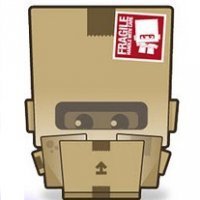
[MOC] Ferrari Monza SP1 & SP2
Cardboy posted a topic in LEGO Technic, Mindstorms, Model Team and Scale Modeling
This is my version of the Ferrari Monza SP1 & SP2 in 1:8 scale. There are two models in ‘one’. I designed this model to be played with as well as look good on a shelf like a proper Lego set should be You can get he instructions here Features and Functions: · opening doors, bonnet/hood and boot/trunk · independent suspension · Akerman steering geometry · 8 + N + R sequential gearbox without the need for a drive and reverse selector (inspired by Anto) · paddle shift gear selection · rear-wheel drive · detailing on the interior, virtual windscreen and engine Dimensions: Length: 73 Studs (59cm); Width: 35 Studs (28cm); Height: 17.5 Studs (14cm) Weight: 2.8 Kg -
Terra Station Z is a space station which be used for researching ores. Inside the Ore Research Centre, there are several research devices and robotic devices for splitting ores. Theres also an motorized conveyor belt for transporting the ores inside the station. Theres also a communication centre, for communication with spaceships and controlling/monitoring drones. This was a part of our Lowlug community Neo Classic Space layout. 01_Terra_Station_Z by Mathijs Bongers, on Flickr 02_Terra_Station_Z by Mathijs Bongers, on Flickr 08_Terra_Station_Z by Mathijs Bongers, on Flickr 11_Terra_Station_Z by Mathijs Bongers, on Flickr 13_Terra_Station_Z by Mathijs Bongers, on Flickr 14_Terra_Station_Z by Mathijs Bongers, on Flickr Pictures also on Flickr: https://www.flickr.com/photos/mathijslegofan/albums/72177720311251724/with/53191969795/
- 19 replies
-
- legomathijs
- moc
-
(and 3 more)
Tagged with:
-
Presenting another of my Danish State Railways’ (DSB) trains redesigned to 8-wide and digitally rendered (with a bonus livery)... DSB IC3 The Danish State Railways’ (DSB) highly successful and innovative InterCity 3 aka IC3 passenger train was co-developed by Siemens -Duewag in Germany and ABB Scandia in Denmark. The train is operated by DSB in Denmark and Sweden, by Renfe Operadora in Spain and by Israel Railways in Israel. Amtrak in the USA and Via Rail in Canada have tested the train in the past. A trainset consists of three units; two diesel motor units (Litra MFA and Litra MFB) and one intermediary unit (Litra FF). Up to five trainsets can be coupled together. 96 trainset were built for DSB from 1989 to 1991. All are still in service today. My model: Original white and red livery used from 1989 to 2002. Fictionally named “Jørgen Vig” with the crest of Billund added. Scale: 1:48 Length: 157 studs (MFA: 55 – FF: 47 – MFB 55) or approx. 122 cm Width: 8 studs Bricks: 2.948 (MFA: 1.040 – FF: 861 – MFB 1.047) Locomotion: 2 x 9v or 2 x PF/PUP train motors Power: 9v, 2 x LEGO AAA battery boxes or 2 x BuWizz battery boxes Control: 9v, PUP, SBrick, PFx Brick or BuWizz Designed: 2022 Conversion of my 7-wide model from 2017 to 8-wide with more accurate dimensions. Very high setting render from Stud.io with custom decals added in the PartDesigner tool. Its able to navigate R40 but looks rather silly doing so: Interior with seats for 83 minifigs: Decorative side design for the bogies - a combination of parts and the molded decorative side for train motors: The coupling part can be change to a Liftarm Thin 1x7 (BL#32065) when combining several trainsets. Technique used for the sliding doors: Removing the 1 x 4 Tile as shown enables the door to slide open as a play feature. The fixed outer doors are a necessary part of the construction otherwise the very long body breaks too easily due to the roof being removable. However, they are designed to be rebuilt open when needed and the trainset stationary on display: The trainset is (fictionally) named Jørgen Vig with the crest of Billund added: Free building instructions: Option 1: https://open-l-gauge.eu/dsb-ic3/ Option 2: https://snakebyte.dk/lego/instructions/trains/diesel_engines/dsb_ic3_(8_wide)/index.php Bonus livery: Livery when Amtrak tested the IC3 Flexliner DMU (Diesel Multiple Unit ) in 1997:
-
XL two track railway locomotive shed (finished in real bricks 10/4/23)
Murdoch17 posted a topic in LEGO Train Tech
This model was originally built by my father around 2005 / 2006 for an old 9v-style MOC steam engine we built together based off set 7722. It was three tracks long and one track wide at first, but I reworked it to be five tracks long and two tracks wide in late 2015. Both of these earlier models were almost totally black with a little splash of red. Fast forward to 2023: I have remodeled the MOC almost entirely. I've changed most of the black to tan, blocking up the lowest row of windows, and changing the red doors to light gray. The roof remains untouched except for twelve parts above the doors / back wall. The building is a little under 5 tracks long, or about 75 studs in length. The maximum side clearance is good enough for a 10 stud wide model (no overhang at that width) while the trains can be no more than 11 bricks tall. Here we see the rear of the MOC. The roof comes off and the inside has a new raised platform to allow for maintenance to the engines. (before it was just totally empty) This model can hold most of my steam engine designs (not all at once of course!), although it is probably too short in length for some of my diesel units. The dismantled 2015 version is in the spoiler tag. EDIT 10/4/23: Real pictures added, entire post restructured. Thoughts?- 12 replies
-
- large
- large model
-
(and 5 more)
Tagged with:
-
I'm happy to present my most recent build, a midwestern grain train from the late 1970's in the US. I've been working on it for most of this year, though the inspiration and some parts purchases date back to 2006. Towards the end of last winter I had been train watching and after about a half dozen trains, each led by a couple of black locomotives pulling a mile long monochromatic string of cars, it got me thinking about an underappreciated heyday. Between 1960 and 1990 American freight cars were a burst of color, and even had a few hints of the old school railroad pride shining through, e.g., Milwaukee Road spending the extra dollar to weld a plate on the side of their covered hoppers declaring themselves "America's Resourceful Railroad." The freight cars were 100% utilitarian in design, but in the bright colors they went a little further and said, "look at me," with each car taking a different hue. Since then, freight cars have drifted back to browns and grays only flashing a random graffiti tag for flare after a night of hanging around with the wrong crowds. I wanted to capture that era in the days just after KarTrak Automatic Car Identification's failure showed how dirty railroading in America can be. But how and what? I've always had a soft spot for covered hopper cars, in particular those based on the Pullman Standard 3 bay design. I had a go at these cars in 2006 Shortly thereafter, I started collecting 1x2 door rail plates and double convex inverted slopes in yellow to build a Milwaukee Road version. Those parts sat in a box and I hadn't returned to that prototype until now. On the flip side, I had most of the parts in hand that I needed to start testing this build. Happy with the prototype, I expanded to 5 different liveries. These covered hoppers are 6 wide, featuring custom decals. With their weight they need roller bearing trucks, to ensure the trucks match the width of the car they use custom truck sides from TrainedBricks.com. At this scale it is impossible to get all of the details, so in this design I focused on capturing the essence, e.g., a continuous slope for the bins from the end of the car to the bottom of the chute, using thin vertical and horizontal members on the ends of the cars. Several of the cars have prototypical placards 1/2 plate out from the ribbing. A couple of the cars consumed almost all of the double convex inverted slopes available on bricklink in the given color. As with most of my designs, these cars are designed to negotiate R40 curves, and in turn, replicating the form of the prototype gave me a true appreciation of the design of the actual cars. Of course, once you start down the rabbit hole of looking at covered hopper cars, you wind up seeing lots of other cool cars... and the potential to build in colors that do not have door rails (dark green). Well, next thing I knew, I also had a design for the ACF center flow covered hopper cars. Once more the covered hoppers are 6 wide. These cars were designed as a complement to the Pullman Standard cars to fill out the fleet and bring in a few more colors/liveries. Why stop at 8 cars? Good question, of course you need a Canadian cylindrical covered hopper, who doesn't need a cylindrical hopper car? So I built one too. Now I know you've all been there, you build a MOC and then discover you need a second MOC to support the first MOC (or in this case, a 10th MOC to support the first 9). When I started out I did not worry too much about what would pull these cars. I have a few period appropriate 9v locomotives, most recent of which are from 2014, a pair of SW1200's. While there was one major solution (FX Track) two problems remained, (1) my old 9v locomotives were not powerful enough to pull the full train, and (2) it has been over a decade since I've run 9v trains in public. I originally thought that I would eventually address #2 at some later point in time, but #1 escalated the need. So off I went to build a period appropriate PF locomotive. I returned to MNS, the same road as the SW1200's. Minneapolis Northfield and Southern was a spunky shortline with a long history and a large fan club for a railroad with just over 80 miles of track. They had a history of unusual locomotives starting with their predecessor, the never electrified Dan Patch Electric Lines and the first successful gas-electric locomotive that was the predecessor to diesel electric locomotives, to a fleet of massive Baldwin center cab locomotives built in the late 40's (nicknamed the "blue dragons"), and their last purchased locomotives the SD39's in 1968. These were essentially SD40's with smaller prime movers (and thus, lower horsepower). They were painted in a distinct dark blue with a single white stripe running the length of the locomotive. The SD39's served until the MNS was purchased by Soo Line in 1982 and one has returned to the shortline (Progressive Rail) that now operates a portion of the old MNS route. My 6 wide SD39 has a lot packed inside, including 2 PF train motors, 1 rechargeable PF battery pack, an IR receiver, a pole reverser, and four weight bricks. Fitting it all in required some compromises, like filling the cab with the IR receiver, and my desire to make the white stripe brick built as much as possible made fitting the battery a lot more complicated. One obvious tradeoff is that the long hood is 5 studs wide to hide the battery, I would have preferred to keep it 4 studs wide. But also a little ingenuity to plow through some of the challenges. If you look closely at the side views, just above the fuel tank you can seek a small patch of dark gray from the battery. I used an old school 4.5v motor plate with 4x8 cutout to drop the battery down below the white stripe and snotted studs to hold the tiles on that cover the side of the battery. The build uses custom stickers, 3-axle motor covers and fan housings from trainedbricks.com, and custom railings to keep them closer to proportional than the brick built alternatives. But I did have to use the classic train wagon ends as a nod to the fact that this is a Lego train after all. Okay... just one more problem, I didn't have a respectable MNS caboose. So now I needed an 11th MOC to support the 10th. The MNS purchased 3 new bay window cabooses in 1972 and like the SD39's, these served until the MNS was purchased by Soo Line in 1982 and one has returned to the shortline (Progressive Rail) that now operates a portion of the old MNS route. The caboose is 6 wide (8 at the bays), featuring custom decals, roller bearing trucks to match the hopper cars. The net result is my all new MNS grain train, with 5 Pullman Standard 3 bay covered hopper cars, 3 ACF 3 bay covered hopper cars, 1 Canadian cylindrical covered hopper car, an MNS SD39 and MNS bay window caboose. All in liveries that would have been seen in the late 1970's or early 1980's. The total length is about 11 ft. All of the cars are 6 wide. Click here for a mediocre video of the train in action I hope you enjoy the train. Questions, comments and constructive suggestions are always welcome The full album is here
-

[MOC] Lego Technic Military Truck (Building Instructions)
makushima posted a topic in LEGO Technic, Mindstorms, Model Team and Scale Modeling
MOC Lego Technic Military Truck Building Instructions: https://play.google.com/store/apps/details?id=max.technic.building.instructions Lego Technic MOC - Military Truck (Building Instructions) Lego Technic MOC - Military Truck (Building Instructions)- 2 replies
-
- building instructions
- instructions
-
(and 5 more)
Tagged with:
-
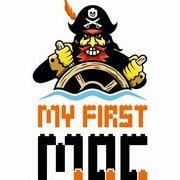
[ENTRY] 1873 & 6258 Pirate Treasure & Smuggler's Shanty - Remake 2023
MyFirstMOC-Hun posted a topic in Pirate MOCs
Hello! This time I combined two classic sets, Pirate Treasure 1873 and Smuggler's Shanty 6258. This is a small island where life goes on and there are traces of greed and a few skeletons to show for it. There are also several hiding places to stash your loot, gold bars and gold coins. Soldiers about to dock bring the pirates their pay for a job well done. On the island there is a fisherman who sells his wares, a tavern of course, a shelter for the captain, a defensive cannon to keep out intruders, at least until the pirates escape. But are there still drunks lying on the beach who can't understand how the rum ran out again? And let's not forget the old man pushing his wages on the little cart, waving to the barman that he'll soon be able to pour another batch of wine. Flickr Instagram -

[MOC] [LXF] Minifig-scale Phantom from Star Wars Rebels
ScottishDave posted a topic in LEGO Star Wars
This is a minifig-scale model of "The Phantom", the shuttle from the TV series "Star Wars Rebels". It's about a foot long and has a full interior, with working hatches at the rear and on the underside. I re-used the cockpit and nose from goatman461's excellent design, along with elements of the sides, roof and underside hatch: and I'm grateful for his kind permission to post this model. As usual, I've documented the build as an LXF file for my own reference, and I am linking the LXF file here in case anyone else feels like building this model. The LXF is nearly-but-not-quite correct. I can't place the roof (the angled pillars at the back prevent it from attaching) and the tyre with tread at the front of the engine should be an old smooth tyre (part no. 132) - something which does not appear to exist in LDD. Update: Many, many thanks to @monkypaws for making the instrctions available for free on rebrickable - link here. This page contains both a step-by-step set of instructions and a parts list. The details section contains a list of rare parts to check before attempting a build. Before someone asks: yes, I am pondering building the Ghost in scale with this shuttle. I estimate it would be quite large - 138 studs long, 1.1 metres, or the length of a stay in a local psychiatric hospital. Here are a couple of pictures. More can be found on the flickr album: Here are some photos of the Interior. First a shot from the front of the cockpit, showing Hera and Kanan, with the rest of the crew in the background (minus Chopper, who is in his droid socket on top of the ship). The belly hatch works, i.e. it opens and closes: There are eight seats in the back (realistically, seating for six, given the width of Lego figures): Once again, more photos can be found on the flickr album There is always room for improvement: If you have any suggestions, comments or criticisms, please feel free to leave them below. Edited 16th May: added interior photos.- 43 replies
-
- minifig scale
- phantom
-
(and 3 more)
Tagged with:
-
Hi everyone! This isn't technically a pirate ship, but I figure all the ship-appreciators in this forum will appreciate it at least as much, if not more, than the sci-fi/fantasy peeps, and hopefully a few of you will even be willing to support on Lego Ideas 🙏. Background This build is specifically inspired by the novel "Ilse Witch", the first in a trilogy (within a longer series) aptly entitled "The Voyage of the Jerle Shannara". Unlike many other fantasy series, it's set in a world which sees substantial technological and magical innovation over the course of 32 novels and thousands of years. At the time of the novel, The Jerle Shannara is the fastest and most advanced airship ever built. The airships of the Four Lands are solar-powered and require active thrust to stay aloft. The sails, called "light sheaths", absorb solar energy, which is channeled through special rigging, the "radian draws", into the parse tubes which house the diapson crystals. It is these crystals which store the solar energy and distribute it through the ship's thrusters. After spending quite a well doing research based on the descriptions in the novel, and being unsatisfied with any of the existing artwork I could find online, I settled on a design which is somewhere between a racing catamaran and a Baltimore Clipper, with just enough additional other-worldly flavor to match the books. Hope you enjoy! A few fun features to highlight: • The captain's cabin in the front of the ship has been converted into two smaller cabins with folding bunks to account for the unusual crew. Captain "Big Red" shares the port cabin with Prince Ahren Elessedil, and his sister, "Little Red", shares the starboard cabin with the seer, Ryer Ord Star. A privacy curtain separates the two cabins on the aft side of the mast, and sliding panels allow access to a shared washroom in the fore of the cabin. • A removable platform between the main hull and port pontoon provides landing space for the roc, Obsidian, and his rider, Hunter Predd, to roost between scouting flights. • Other crew members can wrap themselves in their cloaks and sleep in the pontoons. • The ship is armed with a complement of ballistae to defend against hostile airships, and the ramps may be lowered to send over a boarding party. • The galley occupies the center of the ship and features a long table where the crew can dine together, or study their maps and charts. • The storage room in the aft of the ship has fresh water, food, the armory, and spare parts to make repairs on the long voyage. • The rope ladder may be raised and lowered to take on supplies and passengers. • The ship's wheel in the pilot box really controls the thrusters on either side of the ship's rudder, and the capstan hauls up the dual anchors! • The masts are grippable so crew members can climb up into the rigging. • Obsidian's wings fold and unfold realistically to move between flying and roosting positions. Build consists of approximately 2700pcs, including 12 minifigures. Click to enlarge any of the images / view on Flickr Starboard View with Roc in flight Aft/Starboard View with Roc perching Grabbing a snack in the galley - lines are connecting ship's wheel to rudder Folding bunks and hair-care in the cabin Fore/Starboard View Fore/Port Underneath View Aft/Port View Fore/Port Closeup The Full Crew Complement
- 10 replies
-
- moc
- lego ideas
-
(and 1 more)
Tagged with:
-
Hi! CP Comboios de Portugal recently gave a new color to the Nez Casse loco 2628, based on the former CP4700 from CP Carga (sold/turned to Medway) I have to be honest, I still have mixed feelings about this new livery, the orange is an iconic and complete eye-catcher, and still my favorite. However, making this one in LEGO started to grow on me. I will take some pictures alongside my Arco Coaches as soon as possible. the usual shout out to Raised and his NS1600/1800 and the Enhancements made by Erwin and Nicolas Tbx, my Nose/box design is based on their models. Circa 2000 parts 1Kg 43cm long 2 Powerfunctions L motors Buwizz 2.0 Custom working Lights Custom Vynil stickers designed by Tiago Vasconcelos
-
The Frisco 1522 loco is a 1926 oil burning 4-8-2 "Mountain" type, (4 leading, 8 drivers, 2 trailing) that was made surplus in 1951, donated to the Museum of Transportation (in St. Louis, Missouri) in 1959, and restored to working order in 1988 by the St. Louis Steam Train Association (SLSTA) for it's excursion career. It's new lease on life lasted until 2002 when rising insurance costs made the engine enter it's second retirement, which will be probably be forever. When the engine was running in it's second career, the SLSTA had four train cars in it's excursion support role. They carried parts, tools, merchandise to sell, and crew members not on duty. After re-retirement of the 1522, most of the cars were eventually sold to Milwaukee Road 261 organization and were renamed and repainted into a different paint scheme more suited to that group. This may not be the best interpretation of the Frisco 1522, but it seems to be the one of the few I've seen built out of Lego. The model you see here has been my dream ever since I was 5 or six years old and rode behind the steamer on one of it's last public trips. (I don't remember much of the trip, but I do remember the sense of awe and respect for the power of steam after seeing the loco pull past us on it's journey back to the museum and into what looks to be permanent retirement.) The cab walls on both model and real engine have the name of the railroad (Frisco) on it's side, while the number of the loco (1522) is on the tender sides. One half of this baggage car (named 'Black Gold' after a train the 1522 used to pull) housed tools, spare parts, lubricants and a fire hose or getting water for the loco, among many other things. The other half (usually closest to the engine) had the souvenir shop with shelves and tables for fundraising merchandise selling. The car is now repainted and named 'Golden Valley'. It has been used with Milwaukee Road 261. The 'Firefly' was the crew car. It was also named after a train the 1522 used to pull. The car has been sold to be used with Milwaukee Road 261. It sits in storage currently. The diner-lounge 'Chouteau Club' wasn't owned by the St. Louis Steam Train Association (SLSTA), but by a private individual who was a member of the club. It now is stored / owned by Illinois Transit Assembly in Madison, Illinois, sidelined by side sill rust. The 'Bluebonnet' was a business car and brought up the rear of the train. It was also named after a train the 1522 used to pull. The car has been sold to be used with Milwaukee Road 261. It has been renamed back to it's first name of 'Milwaukee' and repainted into the proper colors for that railroad. The real engine is publicly displayed at the Museum of Transportation in St. Louis, Missouri. The Lego model of the loco is sitting on the front of the loco, just above the cowcatcher. This official Frisco 1522 website gave me invaluable info and pictures of the excursion cars and the loco itself. This page in particular was very helpful in getting the window amount / spacing / 'look' of the excursion cars right. NOTE: Yes, I had a thread made in 2016 for the loco only. That thread was last updated in 2017, and I didn't want to mess with the moderators by bumping it. Thus, this new thread was created. I hope that was ok! EDIT: 9/23/23: Real world photos added!
-
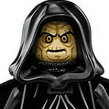
[MOC]-BW3001 - Pre-Orders Open! UCS Kintan Strider Speeder Bike
coreyschaaf posted a topic in LEGO Star Wars
UCS Kintan Strider Speeder Bike As featured in the Book of Boba Fett • by Corey Schaaf | BrickWars.net It's been fun putting this build together. I've worked with so many different people on executing this project. From working with a manufacturer for a custom case, to my signature Printed UCS Plaques, the unique serialized tiles that's different for every build, to the UCS Stickers from a company in the UK - to the final print production of my Limited Edition UCS Instruction manual — I can just about call this one complete. Pieces: 2,285 + 2 Minifigs Weight: 71.5 oz | 4.7lbs Width: 57.6 cm | 22.7 in Length: 25.6 cm | 10.1 in Height: 24.8 cm | 9.7 in Estimated Part Costs: $375-$450 My manual is built in the same way my original UCS instruction manual for the Resistance Troop Transport ship was designed but in a much smaller print run. Only 150 copies of my manual will be available. Email subscribers will be notified when the pre-sale starts, so if you're interested, I would encourage you to visit https://BrickWars.net/moc-bw3001 and signup via the email link at the bottom of the page. You can find all the details and specifications on my website for this build at https://brickwars.net/moc-bw3001. If you have any questions, feel free to ask! You can also give me a follow me on https://www.instagram.com/brickwarsnet/ as well. New Video of MOC Just added- 11 replies
-
- instructions
- custom instructions
- (and 12 more)
-
Hey guys! Here's a big update of my Imperial Base on Er'Kit. This build is both an extension of my long-planned project and an online collab with my friend Noah (H2Brick). Who motivated me to do this? Well, Noah did, whose part of the collab comes very soon. It's much more vertical than mine, I'm gonna spoil you just this. :D It was so nice to do multiple whatsapp/discord building calls with Noah and give feedback to each other. Hope you like this updated version of the base. I personally see some oversimplified areas that I can improve in the future. Don't worry, I'll work on them. I'm having an exam session now and I was grinding for the past 5 days to get this done. I guess it was worth it! :D BTW. The size of the moc is 2x3 gray 48x48 baseplates now, and will be expanded (again) this year! TIE Fighter by Jerac. AT-ST by Pablo Brickasso. 74-Z Speeder heavily inspired by Luca s projects. Ok, here are some pics: Huge thanks to CTR Bricks for editing the main pic! More detail shots in a Flickr album: And here is the september 2020 edition of the collab: Imperius Unitada Ober Totallex!
- 9 replies
-
- jan the creator
- stormtrooper
-
(and 5 more)
Tagged with:
-
This is my contribution to Lego Ideas, if you like it you can vote for it in the link below. https://ideas.lego.com/projects/fe056819-d65a-4e83-b75c-38398be6ac67
-
Hi everyone! After a brief 'dark age' spanning a few years, I've now designed and built a new cargo train locomotive. I wanted something that exudes a sense of 'heavy industry' and initially created a prototype that didn't quite meet my expectations (see image bellow). This model takes inspiration from both the Lego Creator Maersk train, incorporating most of its general structure, and the Polish SM31 shunter locomotives. The locomotive showcases a sleek, black exterior accented with yellow and white details. Because of the primary color, I affectionately named it the "Coffin" locomotive, akin to the real-life SM31's nickname (Trumna). The locomotive closely resembles parts of the the distinctive SM31 train, and the cabin is designed for a minifigure operator, complete with a control panel. Additionally, it's equipped with Power Functions, including a battery box, a train motor, and an IR receiver. Before settling on the black color scheme, I explored various digital iterations, considering options like yellow, red, blue, and green. Ultimately, I chose black for its cost-effectiveness, leveraging parts I already owned.However, it did result in the photos having slightly lower quality due to the darkness of black. The digital model is readily available for download using Lego Studio: https://rebrickable.com/mocs/MOC-158217/Brickviller/coffin-heavy-shunter-locomotive/#details The prototype version, mostly based on an elongated version of the red cargo train 3677. Please take note: Although the digital model featured a light bluish-grey windscreen piece, I discovered that no such part exists in that color when I started building it. I sourced the piece from a custom vendor, and it's not an official Lego component. In the future, I plan to replace it with an original Lego piece in white, which is readily available.
-
Hiya! Here is the final mech in this series. This time around, I started with the helmet and worked my way out. Part availability in Dark Brown definitely played a role in the direction that the model took. Hope you like it! "We're putting the band back together, we need you man!' by Greg Dalink, on Flickr Zuckuss Utility-Class Battle Mech by Greg Dalink, on Flickr Zuckuss Utility-Class Battle Mech by Greg Dalink, on Flickr
-

[MOC] - Lego Technic Cartoon Truck (Building Instructions)
makushima posted a topic in LEGO Technic, Mindstorms, Model Team and Scale Modeling
Lego Technic Cartoon Truck (Building Instructions) Building Instructions: https://play.google.com/store/apps/details?id=max.technic.building.instructions Lego Technic Cartoon Truck - Color Version (Building Instructions) Lego Technic Cartoon Truck - Black and White Version (Building Instructions) -
After some time in the making I can finally share a little something I’ve been working on. This right here is one of the engines built by the Société de Saint-Léonard, and employed by the SMMP (Sociedad Minera y Metalúrgica de Peñarroya) in the mining complex of Puertollano, Spain. It hauled coal and other goods between the different facilities until the mid-70s. By the time the mineshafts closed, they had no use for these engines and most of them were scrapped. Luckily a couple of them survived, one of them being this very same engine. Although officially named “Pozo Norte” after one of the main mineshafts in Puertollano, to this day everyone referres to her as “La Gorda” (The Fat One) no doubt in part because of her imposing girth. Nowadays you can find her sitting (in a rather disheveled state…) on a few meters of track in the gardens of the Mining Museum of the same town it used to work at. I’ve been to this museum many times, and seeing this locomotive was always the highlight of my visit. It was only a matter of time until I finally built it out of Lego. Building this engine was a refreshing change of pace from the high-speed modern trains I’m more used to. Trying to replicate as many shapes and details as possible was a fun challenge. Also, shoutout to @Redrado for suggesting the use of the 4625 hinge 1x4 tile to represent the riveting on the side of the water tanks, it looks great and the engine wouldn’t feel complete without it. The models for the wheels (ML), connecting rods and side rods are from Breckland Bricks. The model is designed to be motorized with a Powered Up L motor, the power is transmitted to the middle axel and through the connecting rods to the rest of the wheels. I’ve used this type of transmission before and I trust it will be strong and durable, however, I’m not so sure about the placement of the battery box, I’m concerned it’s hanging off too much and will cause balancing issues. Hopefully the weight at the front will shift the center of gravity forwards, but that’s something I won’t know for sure until I start messing with real bricks. Here’s a bonus picture of what these engines used to look like in their heyday.
- 18 replies
-
- moc
- in the brick at last!
-
(and 2 more)
Tagged with:
-
Hey everyone! A month ago I showed you my Sächsische IV K. Now I want to show you its smaller predecessor, the Sächsische I K. This locomotive was used in the early days of the Saxon state railways, and were built between 1881 and 1892. They served on various narrow gauge railways up till the late 60s, when all of them were scrapped. In 2006 a plan was made to build a new I K, which was finished in 2009. Sadly in September of 2022 the locomotive was heavily damaged in a collision with a road vehicle. Reparations are still ongoing. To go with it I made a crude Ommr Flatbed railcar. Please tell me what you think! -GPM-
- 10 replies
-
- 1/42
- steam locomotive
-
(and 1 more)
Tagged with:
-
Maelstrom spider boss (from LEGO Universe) - real world build of a digital Rebrickable MOC
Murdoch17 posted a topic in LEGO Sci-Fi
Arachnophobes look away now, because the Maelstrom spider boss is BACK! As seen in the cinematic trailer (link to Youtube) for LEGO Universe, The Spider Boss was imagined by Baron Typhonus as a creature of pure chaos in the Mythran Temple and brought to life by the power of the Imagination Nexus. The Baron created the Spider Boss to demonstrate the possibilities of Imagination without rules. The Spider smashed a Robot Dog (that had just been created by Doctor Overbuild) and moved to attack Duke Exeter, Dr.Overbuild, and Hael Storm as Baron Typhonus laughed in triumph. However, creatures of chaos serve no master; the Spider turned on Typhonus and dragged him into the Imagination Nexus. This action corrupted the Nexus and mutated it into the Maelstrom. I recreated this MOC from instructions on Rebrickable by user Brigs, as seen here. I had to change some parts' colors around (as it wasn't buildable in original form without selling a kidney), and other parts were weakly attached. For example: Those two black wedge slopes on the rear of the body were originally purple, but couldn't be bought in quantity due to them being from one 2014 X-Men set. This made it impossible to get them at a reasonable price. That's all for now, thoughts and comments are always appreciated!-
- baron typhonus
- typhonus
-
(and 9 more)
Tagged with:
-
Arrival in the New World, Central America 1500s Exceptional water technique from Faebricks Arrival in the New World, Central America 1500s by Nicholas Goodman, on Flickr Arrival in the New World, Central America 1500s by Nicholas Goodman, on Flickr Arrival in the New World, Central America 1500s by Nicholas Goodman, on Flickr Arrival in the New World, Central America 1500s by Nicholas Goodman, on Flickr
- 32 replies
-
- conquistador
- new
- (and 13 more)

